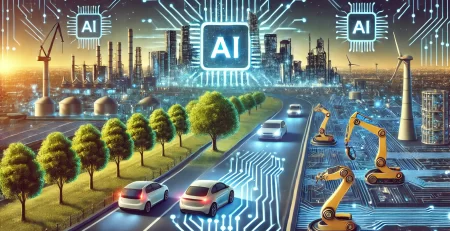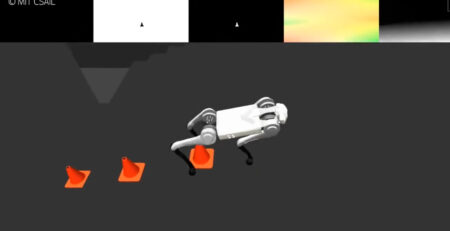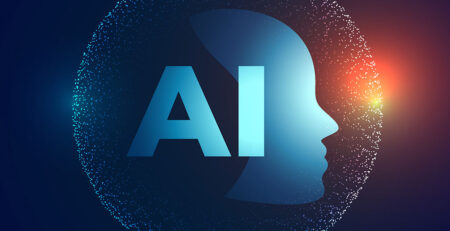Google’s Jarvis Enters the AI Wars: The Next Big Automation Tool?
As artificial intelligence (AI) continues to evolve at an unprecedented pace, the competition among tech giants to dominate this space has intensified. Google’s latest offering, Jarvis, is a cutting-edge browser-based AI assistant designed to automate digital tasks with remarkable efficiency. Positioned as a response to competitors like Anthropic and OpenAI, Jarvis promises to redefine how users interact with their browsers and online applications. With its anticipated rollout in December, the tech community is abuzz with speculation about its capabilities and implications.
What is Jarvis?
At its core, Jarvis is Google’s ambitious foray into Agentic AI, a niche within generative AI focused on task automation. Unlike traditional generative AI models that excel in producing content, Agentic AI aims to take action—navigating, interacting, and performing tasks across digital platforms much like a human user would.
Jarvis is powered by Google’s Gemini 2.0 large language model (LLM), the next-generation framework that builds on the groundbreaking foundation of its predecessor. By leveraging Gemini 2.0, Jarvis boasts enhanced contextual understanding, faster processing, and improved interaction capabilities. This translates into a highly versatile assistant that can:
- Navigate browser interfaces with human-like precision.
- Conduct research and compile data from multiple sources.
- Simulate user actions, such as filling out forms, making purchases, or responding to emails.
- Interpret screenshots to extract meaningful information.
Jarvis aims to go beyond being just a productivity booster for consumers. Its capabilities suggest a potential to revolutionize enterprise workflows by automating tasks in customer relationship management (CRM), enterprise resource planning (ERP), and other complex systems—all through the Chrome browser.
This development aligns with Google’s broader vision of embedding AI deeply into everyday tools, enhancing usability and efficiency for both individual and corporate users.
Competing with Anthropic’s ‘Computer Use’ Ability
Jarvis is entering a heated battle against rival technologies, including Anthropic’s “computer use” feature, introduced just weeks before. Anthropic’s Claude 3.5 Sonnet model introduced a paradigm shift by enabling AI to interact with computer systems at an operational level. Tasks such as navigating screen content, typing, moving cursors, clicking buttons, and managing multiple applications simultaneously are now within reach.
While these features echo the principles of robotic process automation (RPA), their execution is far more intuitive and AI-driven, allowing for a broader range of applications. For businesses, this innovation means that high-volume, repetitive tasks—such as data entry, report generation, and customer communication—can be handled efficiently by AI.
Google’s Jarvis takes these capabilities a step further by incorporating image and screenshot interpretation with unmatched accuracy. Early reports suggest that Jarvis might outpace competitors in determining image coordinates and simulating precise actions within browser interfaces. This opens up exciting possibilities, such as:
- Automating online transactions and workflows with pinpoint accuracy.
- Extracting data from visual elements, such as charts or unstructured PDFs, directly within the browser.
- Handling cross-platform interactions seamlessly, enhancing both consumer and enterprise applications.
Google’s deep integration of AI with its ecosystem could give Jarvis an edge over competitors, providing users with unparalleled accessibility and functionality.
What Jarvis Could Mean for Enterprise
While Jarvis is expected to debut as a consumer tool, its implications for enterprise applications cannot be overstated. Businesses are increasingly reliant on web-based platforms for operations, and an AI-driven browser assistant like Jarvis could become a cornerstone for optimizing these workflows.
For example:
- Customer Relationship Management (CRM): Jarvis could automate data entry, client communication, and follow-ups within platforms like Salesforce or HubSpot.
- Enterprise Resource Planning (ERP): Complex processes like inventory management, financial analysis, or procurement workflows could be streamlined with browser-based automation.
- Workflow Automation: Jarvis can unify disparate systems, creating a single interface to manage emails, documents, spreadsheets, and databases.
Moreover, Jarvis’s ability to interact with visual content and screenshots could prove invaluable for data extraction, validation, and reporting tasks. Imagine an AI assistant that can interpret graphs, analyze screenshots, or even navigate complex dashboards autonomously—a transformative capability for sectors like finance, healthcare, and manufacturing.
These advancements would not only boost productivity but also allow employees to focus on strategic tasks, reducing the time spent on mundane, repetitive operations.
The Future of AI-Driven Task Automation
The race to dominate AI-powered task automation is more than just a contest of technological prowess—it’s a battle to reshape how organizations function in the digital age. Google, Anthropic, and OpenAI are all vying to position their tools as indispensable assets for businesses and individuals alike.
The integration of large language models (LLMs) like Gemini 2.0 into practical applications marks a significant turning point. For enterprises, this means reduced operational costs, enhanced accuracy, and the ability to scale processes like never before. From automating customer support to optimizing supply chains, the potential is vast.
At the same time, the entry of tools like Jarvis raises important questions about data security, ethical AI usage, and the potential for workforce displacement. Companies adopting these technologies must balance their benefits with considerations for privacy and accountability.
The Road Ahead for Jarvis
The December rollout of Jarvis will be a critical moment for Google to prove its mettle in the competitive AI landscape. If successful, Jarvis could set a new benchmark for browser-based automation, demonstrating the full potential of Agentic AI.
From automating mundane tasks to redefining enterprise workflows, Jarvis promises to be more than just another AI assistant—it’s poised to become a transformative force in how we interact with digital environments.
As the AI wars continue to unfold, the introduction of Jarvis signals a pivotal chapter in the evolution of automation technology. Whether it’s Anthropic, OpenAI, or Google that emerges as the leader, one thing is clear: the future of task automation is here, and it’s smarter, faster, and more intuitive than ever before.












Comments (0)
I’m really enjoying the theme/design of your web site. Do you ever run into any browser compatibility issues? A handful of my blog readers have complained about my blog not operating correctly in Explorer but looks great in Safari. Do you have any recommendations to help fix this problem?